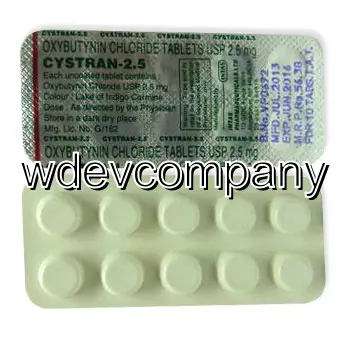| Package | Dosage | Price | Price per Dose | |
|---|---|---|---|---|
| Dosage: 2,5mg | ||||
| 240 pill | 2,5mg | $295.16 | $1.23 | |
| 120 pill | 2,5mg | $149.33 | $1.25 | |
| 90 pill | 2,5mg | $119.46 | $1.32 | |
| 60 pill | 2,5mg | $82.56 | $1.37 | |
| 30 pill | 2,5mg | $43.91 | $1.48 | |
| Dosage: 5mg | ||||
| 360 pill | 5mg | $783.60 | $2.18 | |
| 240 pill | 5mg | $530.60 | $2.21 | |
| 180 pill | 5mg | $407.61 | $2.27 | |
| 120 pill | 5mg | $277.59 | $2.32 | |
| 90 pill | 5mg | $217.85 | $2.42 | |
| 60 pill | 5mg | $152.84 | $2.55 | |
| 30 pill | 5mg | $82.56 | $2.72 | |
| 20 pill | 5mg | $57.96 | $2.92 | |
| 10 pill | 5mg | $31.61 | $3.13 | |

Oxybutynin Description
Introduction to Oxybutynin
Oxybutynin is a widely used medication primarily prescribed to treat overactive bladder symptoms. It helps reduce the urgency, frequency, and incontinence associated with uncontrollable bladder activity. As an anticholinergic agent, oxybutynin works by relaxing the bladder muscles, which in turn increases bladder capacity and decreases the urgency to urinate. Many patients find it effective in managing their condition and improving their quality of life.
How Oxybutynin Works
The medication functions by blocking the action of acetylcholine, a neurotransmitter that stimulates bladder contractions. By inhibiting these signals, oxybutynin reduces involuntary bladder contractions. It acts on the smooth muscles of the bladder, leading to increased storage capacity and fewer episodes of sudden urges or accidents. This mechanism makes it an essential treatment option for those suffering from overactive bladder syndrome.
Formulations and Dosage
Oxybutynin is available in various forms, including tablets, syrup, patches, and topical gels. The choice of formulation often depends on patient preferences and medical advice. Typical doses range from 5 mg to 10 mg taken two to three times daily for tablets, while patch formulations provide a continuous release of medication over 24 hours. It’s crucial for patients to follow their healthcare provider’s guidance on dosing to minimize adverse effects and achieve optimal results.
Benefits and Effectiveness
Many users report significant relief from symptoms after starting oxybutynin treatment. The medication has a quick onset of action, and noticeable improvements are often observed within a week. It can considerably lessen episodes of urinary incontinence, reduce frequency and urgency, and improve overall comfort. For most patients, oxybutynin enhances daily activities and allows greater confidence in social and professional settings.
Possible Side Effects
While oxybutynin is generally well-tolerated, some individuals may experience side effects. Common issues include dry mouth, dizziness, constipation, blurred vision, and skin irritation at the patch site. Less frequently, some patients may encounter urinary retention or allergic reactions. It is important to report any persistent or severe side effects to a healthcare provider promptly. Adjustments in dosage or alternative treatments may be necessary to ensure safety.
Precautions and Interactions
Before starting oxybutynin, patients should inform their doctor about their full medical history, especially if they have glaucoma, urinary retention, or gastrointestinal problems. The medication can interact with other drugs, such as certain antidepressants, antihistamines, and other anticholinergic agents. Combining medications without medical consultation can increase the risk of adverse effects. Proper medical supervision ensures safe and effective use of oxybutynin.
Conclusion
Oxybutynin remains a cornerstone in the management of overactive bladder symptoms. Its versatility in formulation and proven efficacy make it a preferred choice for many patients. As with any medication, careful adherence to prescribed instructions and regular communication with healthcare providers help maximize benefits and minimize risks. Overall, oxybutynin offers significant relief for those seeking a solution to urinary urgency and incontinence issues.
